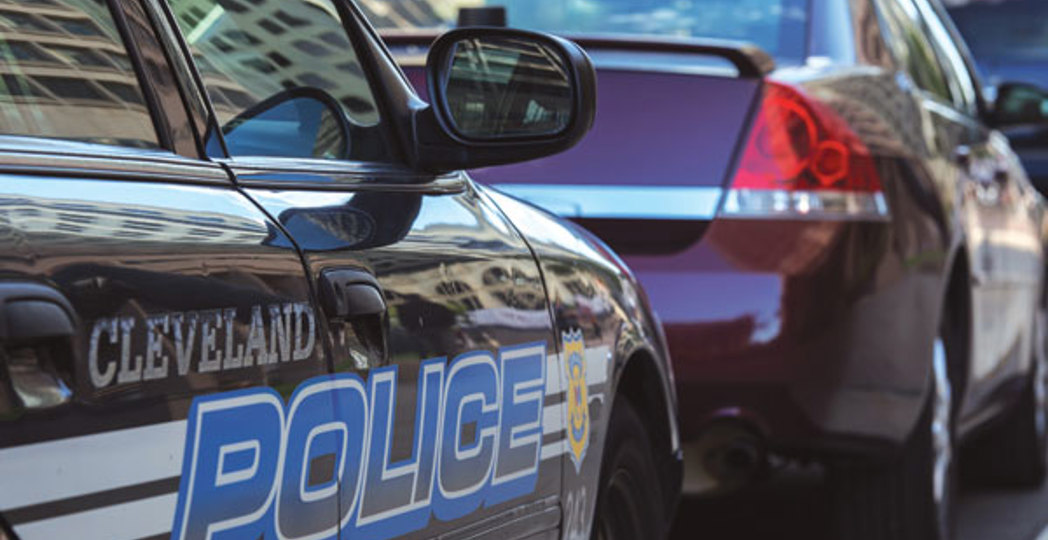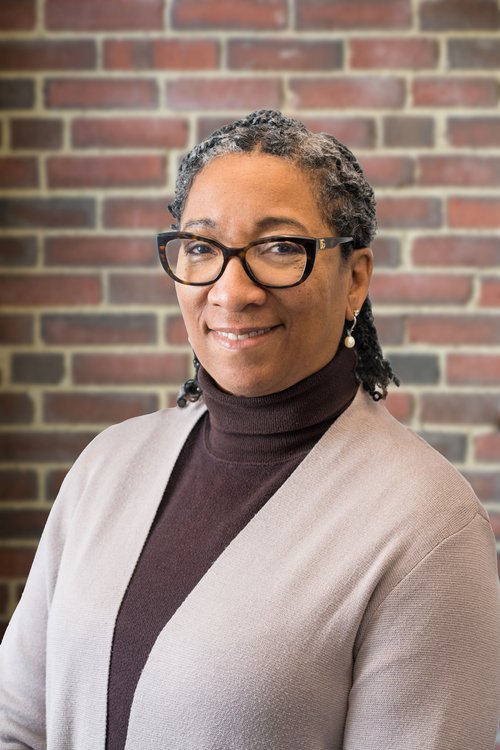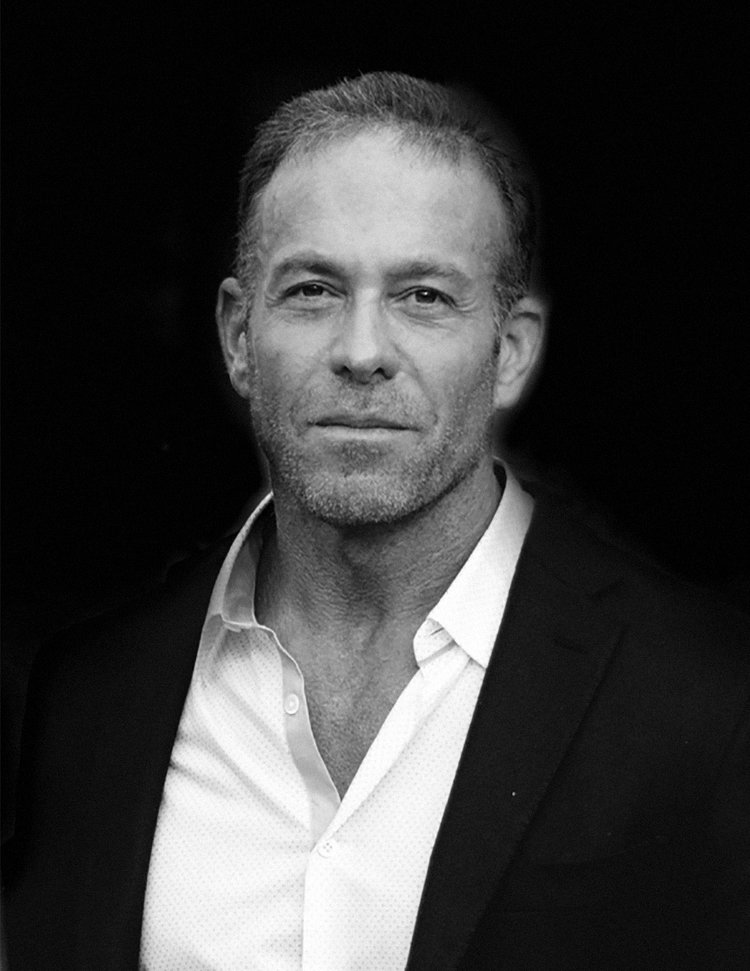Cleveland's Safety Numbers: Inside the Stats and the Plans for Change
City officials and activists focus on strategies to remedy troubling statistics on violent crime.
by Bob Sandrick | Nov. 30, 2016 | 5:00 AM

Walter Novak
Debra Lewis-Curlee and her family have always strived to make their Mount Pleasant neighborhood, on Cleveland’s east side, safe and friendly. A family tragedy on their street only made them work harder.
Curlee’s father, Daniel Lewis, was killed by a stray bullet in June 2008. It happened near his home on Prince Avenue, off East 93rd Street, as his grandchildren played around him.
The gunshot came from the passenger seat of a car and was meant for the driver of another car. The bullet ricocheted and hit Lewis, who was 75, in the chest. He was sitting in his motorized wheelchair.
The shooter, Eric Carson, 28 at the time, was eventually turned in by his driver. His intended target had reportedly disrespected his girlfriend.
“It didn’t change anything,” Curlee says of the incident. “I was always an advocate against violence. This just reaffirmed and strengthened my commitment.”
Lewis’ death inspired his family to seek official status for its Prince Avenue street club, which builds relationships among neighbors and addresses community problems.
Meanwhile, Curlee continued her role as director of Mount Pleasant Community Zone, a position she had held since 2001. The nonprofit raised money for neighborhood improvements and established street clubs, crime watch groups, citizens police academies and even community gardens.
“Residents were engaging in activeness,” Curlee says. “They were part of a growing attitude that we live in this community, and we know each other, and we can bring change, even though it came in small steps.”
Mount Pleasant Community Zone, due to lack of funding, stopped functioning in 2014, but Curlee continues her advocacy work with Partnership for a Safer Cleveland, a nonprofit that promotes safety and creates opportunities. Curlee and the partnership are implementing the Byrne Criminal Justice Innovation Program, a federal initiative to improve distressed neighborhoods, in Mount Pleasant.
“There are things residents can do to be more proactive,” Curlee says. “Residents have to demand that things happen, or they won’t happen.”
Dark numbers
City officials and civic leaders agree that things must happen to make Cleveland safer and more livable, although administration officials and police chose not to participate in this article.
“Cleveland’s urban conditions are among the harshest in the United States,” Cleveland’s Collaborative on Youth Violence Prevention — consisting of city officials and community helpers like Partnership for a Safer Cleveland — reported this spring in a draft of its plan to combat violent crime.
According to the draft plan, Cleveland’s estimated violent crime rate is 1,384 for every 100,000 residents, which is more than three times the national average of 404.
Ten-year crime statistics from the Cleveland Division of Police show the annual number of homicides has climbed since 2010, topping the 100 mark in both 2014 and 2015. This was after a steady drop in the number, from 119 and 134 in 2006 and 2007, respectively, to 72 in 2010.
Rape cases in Cleveland have followed a similar down-and-up trend. The number was 602 in 2006 and dropped to a low of 471 in 2011. Since then, the number has reached more than 500 a year. Last year, 559 rape cases were reported, the most since 2006.
Other violent crimes deviate from the pattern. The number of robberies generally has dropped since 2006, when 4,333 robberies were reported. In 2015, the number bottomed out at 3,010.
As for felonious assaults, there is no statistical trend. The number decreased from a high of 2,680 in 2006 to 2,261 in 2008, then rose and fell every year until 2015, when 2,503 felonious assaults were reported, the most since 2007.
Police emphasize that totals in each of the four crime categories, except homicide, are down compared with 2006, specifically. Also, annual totals of all “part-1 crimes” — which, in addition to homicide, rape, robbery and felonious assault, include burglary, theft, grand theft auto and arson — have declined each year since 2011.
Michael Walker, executive director of Partnership for a Safer Cleveland, says it’s important to look over a longer period when analyzing crime statistics. He provided numbers going back to 1992, when the city documented close to 9,000 total violent crimes. That number was just under 6,000 in 2014.
“The long-term data shows Cleveland has gradually reduced violence over an extended period of time, with an uptick every three-four years,” Walker says.
Some residents — such as Charlotte Iafeliece, chairperson of the East 185th Street Association — feel less threatened because they take action. Iafeliece says she and her neighbors work closely with police and report trouble when they see it.
Iafeliece’s perspective is reflected in a community survey, published in June as part of the agreement between the city and U.S. Department of Justice to reform the police division. The survey showed that 70 percent of Cleveland residents feel very safe or somewhat safe in the city as a whole, and 78 percent feel safe in their neighborhoods.
Still, 57 percent were somewhat worried or very worried about becoming a crime victim. Blacks and Latinos felt less safe than whites.
Councilman Zack Reed, whose Ward 2 includes the Mount Pleasant, Union-Miles and Mill Creek Falls neighborhoods, is alarmed by the recent rise in crime. He says violence has become too commonplace in Cleveland, and that the city is on pace to surpass 100 homicides for the third straight year.
“On average, someone gets shot in Cleveland every day, and on average someone gets killed every week,” Reed says. “We have created an atmosphere of violence.”
Poverty is likely among the causes of crime. In 2014, the American Community Survey reported that Cleveland was the second-poorest big city (with a population of at least 250,000) in the United States. In 2012, the U.S. Census Bureau estimated that 34.2 percent of Cleveland residents live below the poverty line.
In February, the Economic Innovation Group named Cleveland the most distressed large city in the United States, based on employment, poverty, high-school-graduation rates, number of vacant houses, median income and number of businesses.
A shrinking police force is another factor. Longtime Ward 8 Councilman Michael Polensek says that, in the 1990s and early 2000s, the city employed close to 2,000 officers. Due to layoffs and attrition, the force now has less than 1,500. Staff reductions have meant elimination of police mini-stations, which allowed officers to nurture relationships with residents, a vital element in community policing.
Ron Soeder, president of Boys & Girls Clubs of Cleveland, says easy accessibility to weapons is another problem.
“There is no reason why kids should be walking around with AR-15 (rifles) with 30 clips,” Soeder says. “There are a lot of those guns on our streets.”
Bright lights
The city’s Collaborative on Youth Violence Prevention plans to unveil the final draft of its anti-violence proposal in November.
In 2008, the city introduced Operation Focus, which targeted boys and young men in gangs. They could either continue a criminal lifestyle and receive increased attention from police or accept help that included drug treatment, behavioral health services, food support and after-school programs for their children.
Operation Focus was modeled after Boston’s Operation Ceasefire, which, according to the National Institute of Justice, reduced gun violence by 68 percent in one year. Operation Ceasefire went after firearms traffickers and gave youth a way out of gang life.
It’s hard to measure statistically the impact of Operation Focus. The number of murders shot up to 120 in 2009, then dropped to 72 in 2010, before rising again. At least some who worked on the program believe it has faltered due to lack of money, and that it failed to provide social services consistently and track the progress of young men participating.
“We didn’t have the resources for Operation Focus,” says Daniel Flannery, director of Case Western Reserve University’s Begun Center for Violence Prevention Research and Education, which was involved in the program.
The latest plan is a partnership between the city and groups like the Begun Center, Partnership for a Safer Cleveland and Cleveland Peacekeepers Alliance, a nonprofit that builds relationships with residents in impoverished areas and tries to stop violence before it starts.
Cleveland’s new anti-violence strategy is a product of the National Forum on Youth Violence Prevention, an initiative by President Barack Obama to treat street violence as a public health issue.
The new plan concentrates on 15- to 25-year-olds who are “high-risk,” meaning they may live in poverty, lack male role models and join gangs. Police, schools and courts would refer them, Flannery says.
Key to the new program are “violence interrupters.” Hospital staff contacts them after a shooting, while the victim is still in the hospital. Violence interrupters — former prison inmates, gang members and others with street creditability — talk the victim and his family out of taking revenge.
“Forty percent of the time, when someone is shot and ends in in a hospital, the victim or the family retaliates,” Soeder says.
Reed says the concept of violence interrupters came from a New York City program called Cure Violence, which has been duplicated in other cities.
“Any plan that includes hospitals, healthcare and interrupters is a good plan,” Reed says.
Like Operation Focus, the new program would offer help to young people wanting a better life.
“Social programs bring sustainability to the downtick of violent crime,” Flannery says. “Even police say we can’t arrest our way out of this. They need help in other arenas over the long term to make a dent.”
Soeder says one goal is to reduce violence by 10 percent over the first three years. It doesn’t sound like much, but expectations of previous programs weren’t realistic, he says.
To fund the program, Soeder says, Cleveland Peacemakers Alliance — which is now managed by Boys & Girls Clubs — and MetroHealth System was awarded a $75,000 grant from United Way. The money will pay mostly for a violence interrupter at MetroHealth Medical Center in Cleveland. Also, Peacemakers and University Hospitals have also applied for a $75,000 grant from the City of Cleveland for a second violence interrupter.
Reed says to make the program sustainable, businesses must provide internships and job opportunities for young inner-city youth and give small grants and loans to programs that help them.
In the end, young men who insist on a life of crime would head to prison.
“We have to admit that, in our society, there are people unable to get along with others and follow the rules, and who can’t be rehabilitated,” Walker says. “But don’t treat the other 93 percent the same way. Offer them help.”
Civic Activism
The Cleveland-U.S. Department of Justice police reform agreement requires the city to study police staffing levels, and the city wants to hire more officers. A proposed income-tax increase on the November ballot would help.
In August, The Plain Dealer reported that if voters approve the tax increase, the police division would request $11.7 million over the next four years to add 120 new positions, including 90 patrol officers, 25 sergeants, four lieutenants and one captain.
The police reform agreement also calls for more community policing. Curlee says officers from the Fourth District provide safety training for Mount Pleasant’s many street clubs. Police also appear at community festivals.
John Hopkins, executive director of the Buckeye Shaker Square Development Corp., acknowledges that community policing exists today. The corporation hosts safety summits, inviting Fourth District police officials to meet with community leaders and street club presidents.
“It’s usually very productive because residents who attend are very vocal about what’s going on in their neighborhoods,” Hopkins says. “We usually get immediate action from the police, whether it’s speeding cars or drug houses.”
But Hopkins agrees that more community policing is needed.
“When we cut to the chase, people who scream the loudest, who make the most calls, write the most letters, are organized to get their message to the police, get the attention,” Hopkins says. “But the problem is the attention is not sustainable. It handles an immediate issue, but the crime problem is systemic.”
Greg Pollard, safety liaison with the Collinwood Nottingham Village Development Corp., regularly reviews police reports of crime in his neighborhood and makes police aware of crime trends, if they already haven’t spotted them.
Pollard, a retired Cleveland police officer, says some residents, although complaining about shootings and drug activity, never call police.
“Residents don’t want to feel like a snitch,” Pollard says. “But if your neighborhood is going down and you don’t think you should tell, and people are shooting at each other, who’s to say the bullets won’t go through your house? You have to tell what’s going on.”
Trending
-
1
-
2
-
3
-
4
-
5










